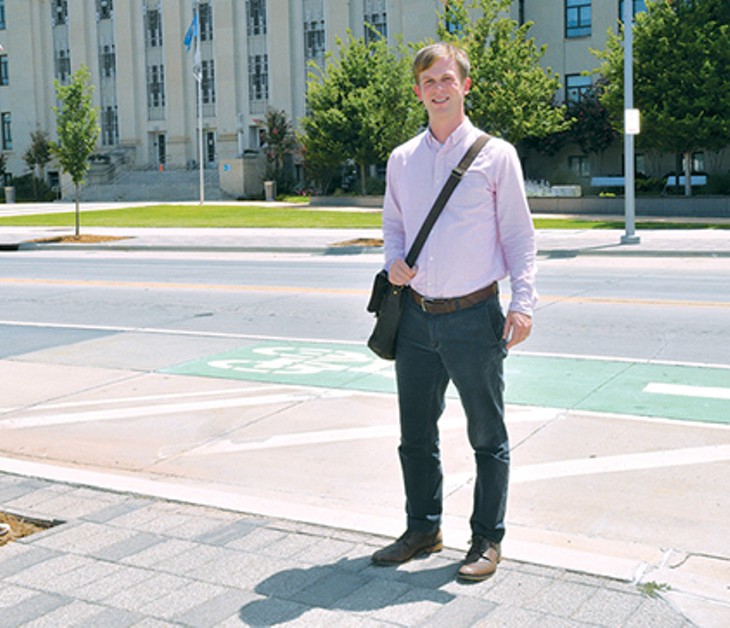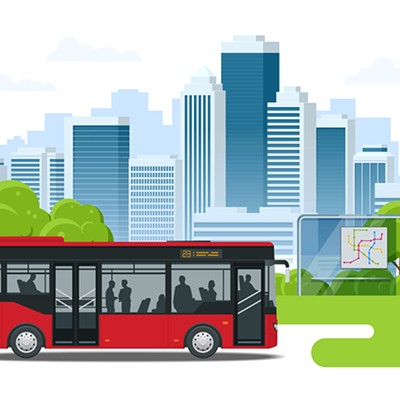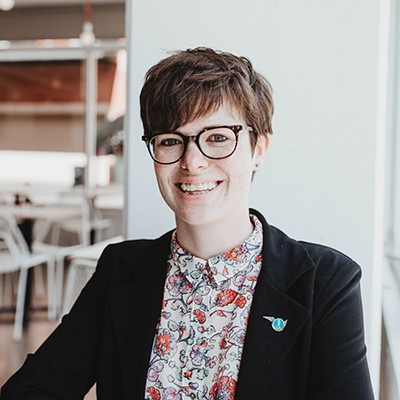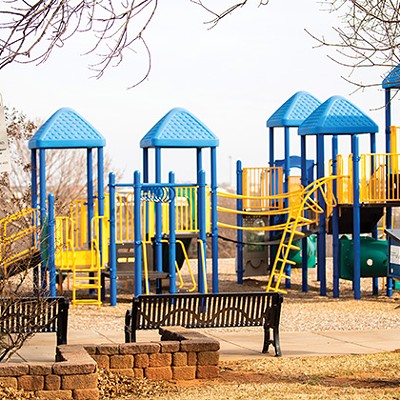
Many people would call the idea of living comfortably in Oklahoma City without a car impossible. But for John Tankard and his wife Elizabeth, it was a reality they willingly lived for three years.
John works as a bike and pedestrian planner for the City of Oklahoma City Planning Department. He also helped run the blog Carless in OKC for several years in tandem with his wife.
The couple moved here from Georgia after John got his job in OKC. There was one problem, though. They did not have a car or the financial means to obtain one before their move.
As a short-term solution, they decided to move into downtown OKC within walking distance of his work. They figured John could do that until they saved up enough money to buy a car.
But after several weeks of walking to work, it eventually dawned on Tankard how much he liked not having a daily commute. His wife was able to take the bus to work, and that was working out well for her, too.
One night, the two were bored inside James E. McNellie’s Public House, looking up hobbies for couples on their phones. Eventually, blogging came up, which is where they got the idea for a blog about what life was like without a car in the state’s largest city. That’s when they committed to making their carless status into a long-term lifestyle experiment.
“We decided, ‘Let’s try it out. Let’s see what it’s like living without a car,’” he said.
New approach
Tankard’s experience living without a car in OKC is part of the reason he is so excited about his role in developing and facilitating the bikewalkokc plan, which is the city’s first master plan for both pedestrians and cyclists. The plan, which outlines several major bike and walk path projects to take place over many years, was approved by the city council in May.
Car commutes are not likely to go away soon in a city sprawled over a large land area. The purpose of bikewalkokc is to make life easier for those who prefer — or are limited to — the alternatives.
“This is a city that is very car-centric, and in no way is the goal of this plan to change that, necessarily,” Tankard said. “It’s just to make sure that this city works for everybody. It’s not that difficult of a concept, but the devil’s in the details.”
A city that walks and bikes more is generally healthier than a city that spends its time locked in car traffic. Tankard said individual health is obviously an important thing, but the city benefits in more ways from healthier overall living. Large employers like to set up shop in places where they know the hiring pool is reliably healthy. More job opportunities can snowball into attracting new, talented people into the state.
“It sounds too good to be true, but it’s not,” Tankard said. “That’s what’s happening here [in OKC]. MAPS [Metropolitan Area Projects Plan] is the greatest example of that.”
In addition to physical construction projects, the bikewalkokc plan is also looking at policy initiatives and existing city code that can be updated to be more bike- and pedestrian-friendly. While implementation of most of these projects has yet to officially begin, Tankard said it won’t be too long until people start seeing a noticeable impact.
“The wheels are moving, no pun intended,” he said.
Planning ahead
In 2015, OKC adopted the comprehensive planokc. The plan took a very broad approach to comprehensive planning, not only considering things like land use, but also transportation, environment and culture.
A section within planokc listed several goals toward improving the city’s long-term connectability. One of those goals was to create a comprehensive master plan for biking and pedestrians, which is what bikewalkokc represents.
Tankard said while people are motivated to take on more active commuting methods for health reasons, OKC has also spent recent years developing areas into places that are more walkable — or at least have the potential to be.
“People want to walk and bike in Oklahoma City,” he said. “That has become very apparent.”
bikewalkokc is essentially a list of project plans driven by recognized needs with no specific funding attached. In September, voters approved an extension of the MAPS 1 percent sales tax to fund trail, sidewalk, bike path and other improvements. Much of that collected money will likely be used to complete bikewalkokc projects.
The plan outlines numerous bike and pedestrian projects that would take the city decades to complete in total. Among them are plans to increase the walkability in the area around the N. Classen Boulevard and NW 23rd Street intersection and complete a loop of trails around Grand Boulevard, which would include a bridge over Deep Fork River.
bikewalkokc also identifies several pedestrian priority areas, which are places that have strong urban form and are suitable for walkability but lack the infrastructure. Those areas include places like The Windsor District, Historic Stockyards City, Historic Capitol Hill and NE 23rd Street at Martin Luther King Boulevard.
Tankard said the idea is all about reintroducing pedestrian sensibilities into areas that were built up without them.
“That’s due to policy from previous decades that deprioritized the pedestrian in order to prioritize automobiles,” he said. “We’ve since come back to realizing that, ‘No, we need sidewalks.’ People want them.”
There is no set timeline for when all of bikewalkokc’s projects might be completed. The plan is designed in a way that allows projects to be addressed as funding is available.
“It’s intentionally packed with projects to go well into the future,” Tankard said. “If we stick with this plan until 20 years from now, that’s great; we can do that. Or it sets us up to revise what we can do to keep moving forward in 10 years.”
Fresh perspective
The Carless in OKC blog earned the Tankards a lot of attention. For 26 weeks, the couple was invited onto KOSU for a short segment on living without a car that aired during Thursday commute hours. Tankard recalls the time a local news station shot a segment on the couple’s lifestyle.
"People want to walk and bike in Oklahoma City. That has become very apparent." — John Tankard
tweet this
“We’re there in our work clothes, getting filmed getting on the bus as if this is some crazy thing,” he said. “But then there are 50 other people getting on the bus going, ‘Why are you being filmed doing this?’ It was embarrassing, but in a constructive way for us.”
There are a lot of people who promote cycling because they love bicycles, but those who are forced to use alternative transportation often have less representation. His carless experience has given Tankard more awareness and compassion for that community than he would have had otherwise.
The Tankards have a car now. They like going on road trips to national parks, and while renting a vehicle was a suitable option, desperately trying not to ding a car on a drive up to Utah was more hassle than it was ultimately worth.
Still, Tankard is inspired to help reshape the city in a way conducive to carless travel. The three-year experience of living without was a life-altering experience for him and his wife.
“I won’t say not buying a car didn’t improve our quality of life because it certainly did,” he said, “but she and I both gained a lot of empathy for the people who don’t have that choice.”
Visit okc.gov/bikewalkokc.











